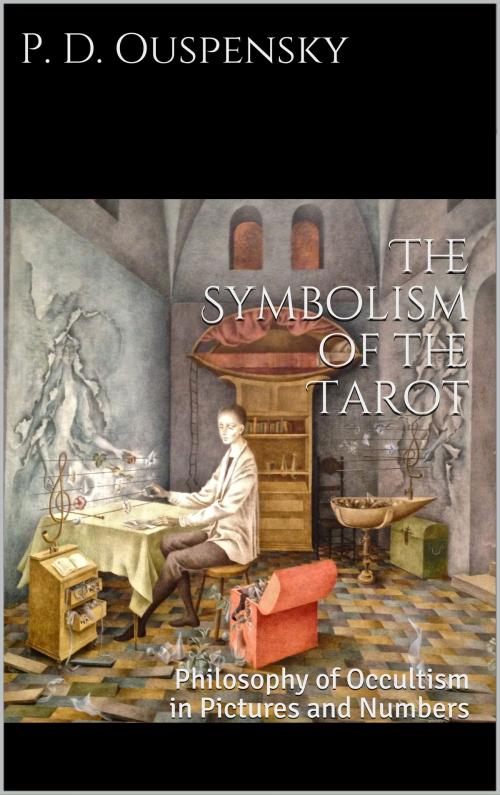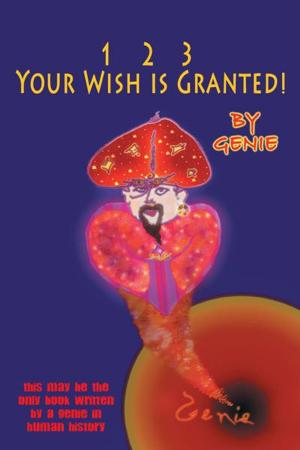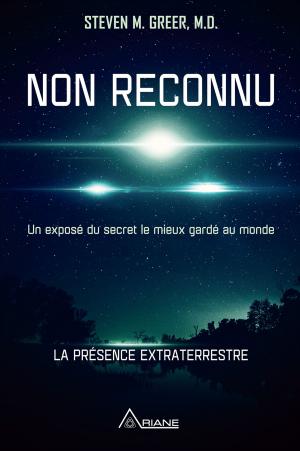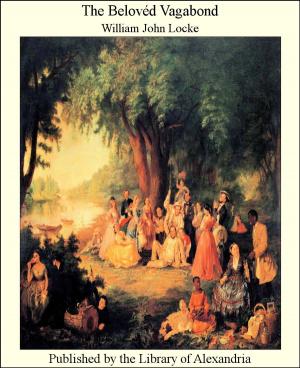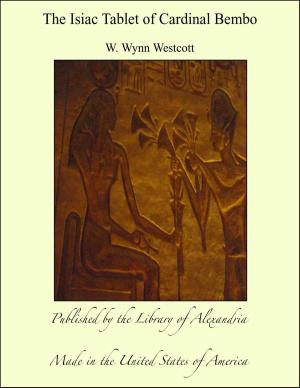The Symbolism of the Tarot
Philosophy of Occultism in Pictures and Numbers
Nonfiction, Religion & Spirituality, Occult, Occultism, Astrology, New Age| Author: | P. D. Ouspensky | ISBN: | 1230003233269 |
| Publisher: | Artemide Libri | Publication: | May 16, 2019 |
| Imprint: | Language: | English |
| Author: | P. D. Ouspensky |
| ISBN: | 1230003233269 |
| Publisher: | Artemide Libri |
| Publication: | May 16, 2019 |
| Imprint: | |
| Language: | English |
Although represented as a pack of cards, the Tarot really is something quite different. It can be "read" in a variety of ways. As one instance, I shall give a metaphysical interpretation of the general meaning or of the general content of the book of Tarot, that is to say, its metaphysical title, which will plainly show that this work could not have been invented by illiterate gypsies of the fourteenth century.
The Tarot falls into three divisions: The first part has twenty-one numbered cards; the second part has one card 0; the third part has fifty-six cards, i. e., the four suits of fourteen cards. Moreover, the second part appears to be a link between the first and third parts, since all the fifty-six cards of the third part together are equal to the card 0. Now, if we imagine twenty-one cards disposed in the shape of a triangle, seven cards on each side, a point in the centre of the triangle represented by the zero card, and a square round the triangle (the square consisting of fifty-six cards, fourteen on each side), we shall have a representation of the relation between God, Man and the Universe, or the relation between the world of ideas, the consciousness of man and the physical world.
The triangle is God (the Trinity) or the world of ideas, or the noumenal world. The point is man's soul. The square is the visible, physical or phenomenal world. Potentially, the point is equal to the square, which means that all the visible world is contained in man's consciousness, is created in man's soul. And the soul itself is a point having no dimension in the world of the spirit, symbolized by the triangle. It is clear that such an idea could not have originated with ignorant people and clear also that the Tarot is something more than a pack of playing or fortune-telling cards.
P. D. Ouspensky
----------------------------------------------------
The Russian-born Peter D. Ouspensky (1878-1947) popularized interest in the occult in the early 20th century with his own ideas - as in Tertium Organum in 1912 - and the ideas of G. I. Gurdjieff in the posthumous 1949 book In Search of the Miraculous. Early in his career Ouspensky penned a short work on the images of the tarot, using the recently issued Waite-Smith pictorial deck as his basis. Here is that work.
Although represented as a pack of cards, the Tarot really is something quite different. It can be "read" in a variety of ways. As one instance, I shall give a metaphysical interpretation of the general meaning or of the general content of the book of Tarot, that is to say, its metaphysical title, which will plainly show that this work could not have been invented by illiterate gypsies of the fourteenth century.
The Tarot falls into three divisions: The first part has twenty-one numbered cards; the second part has one card 0; the third part has fifty-six cards, i. e., the four suits of fourteen cards. Moreover, the second part appears to be a link between the first and third parts, since all the fifty-six cards of the third part together are equal to the card 0. Now, if we imagine twenty-one cards disposed in the shape of a triangle, seven cards on each side, a point in the centre of the triangle represented by the zero card, and a square round the triangle (the square consisting of fifty-six cards, fourteen on each side), we shall have a representation of the relation between God, Man and the Universe, or the relation between the world of ideas, the consciousness of man and the physical world.
The triangle is God (the Trinity) or the world of ideas, or the noumenal world. The point is man's soul. The square is the visible, physical or phenomenal world. Potentially, the point is equal to the square, which means that all the visible world is contained in man's consciousness, is created in man's soul. And the soul itself is a point having no dimension in the world of the spirit, symbolized by the triangle. It is clear that such an idea could not have originated with ignorant people and clear also that the Tarot is something more than a pack of playing or fortune-telling cards.
P. D. Ouspensky
----------------------------------------------------
The Russian-born Peter D. Ouspensky (1878-1947) popularized interest in the occult in the early 20th century with his own ideas - as in Tertium Organum in 1912 - and the ideas of G. I. Gurdjieff in the posthumous 1949 book In Search of the Miraculous. Early in his career Ouspensky penned a short work on the images of the tarot, using the recently issued Waite-Smith pictorial deck as his basis. Here is that work.
